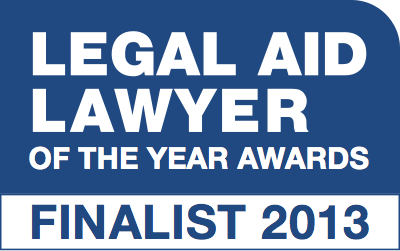Should I Buy To Let?
Property prices have risen substantially for many years in the UK, with the occasional drop in values in times of recession. The long-term reliability of property investment (which, of course is not a guarantee of future price growth) plus the negligible returns offered by deposit accounts, may make the buy to let market seem an attractive proposition.
In this article we look at some of the more practical, but less often mentioned, aspects of buy to let which clients should consider.
Investment Management and Transaction Costs
Letting usually has fairly high investment management costs. The transaction costs are relatively high, particularly the Stamp Duty Land Tax (SDLT) payable on purchase and the agent’s fee on sale. Preparation of leases for each set of tenants and other costs add up to make property a relatively expensive investment asset to hold in terms of management costs. Landlords also need to be licensed if they rent for multiple occupancy and such licences can be expensive. The cost implications of safety legislation can also be substantial.
From April 2016, buy-to-let properites and second homes have carriedy an additional SDLT charge, adding significantly to the acquisition cost.
Tenants
Good tenants make being a landlord easier, but the other kind exist, too. Every tenant represents a potential problem. They may fail to take care of, or even damage, your property, necessitating significant expenditure before it is fit to be let again. They may stop paying their rent. They may refuse to vacate the property or wreck it. Dealing with problem tenants can be both expensive and can cause gaps in the flow of rental income (although this can be insured against). Having a well thought out lease agreement is an essential protection.
Buying Badly
Before buying any property, you should research the area. Rises and falls in value are not uniform in individual areas, let alone across the country. Also, make sure you have the property carefully surveyed.
Agents
The quality and effectiveness of letting agents varies a great deal. Make enquiries of other landlords before making your choice. Recently, a scheme called The National Approved Letting Scheme was set up in order to improve the service to landlords and tenants. To belong to the scheme, members must:
- agree service standards set out in writing;
- set a clear charging structure;
- maintain professional indemnity cover and client money protection cover;
- establish an internal complaints procedure; and
- offer mediation and binding arbitration in the case of disputes.
Tax
Profits from rental income are taxable in the normal way, but do not attract National Insurance Contributions – a significant saving compared with earned income. You can deduct repairs, letting agent’s fees and so on. The tax position varies somewhat, depending on whether you let the property furnished or unfurnished, so take advice about which is the better choice. If you live abroad and rent out a house owned in the UK, you will find that tax is deducted by your letting agent. Lastly, when a property is sold, there is the possibility that any gain may be subject to Capital Gains Tax.
The tax relief available to buy to let landlords for mortgage interest is restricted to 75% of mortgage interest paid (from 2017/8) by non-corporate landlords and this will fall to zero by 2020, being replaced by a tax credit.. and from April 2016 the 'wear and tear' allowance was replaced by a system providing tax relief on replacement items only.
In addition, higher rates of Stamp Duty Land Tax (SDLT) are charged on purchases of additional residential properties (above £40,000), such as buy to let properties and second homes. The additional rate is 3 per cent more than the 'basic' SDLT rate. The full list of rates is here.
Properties let using AirB&B or similar platforms only qualify for the 'rent-a-room' exemption pf £7,500 if the owner of the property resides there when it is let.
Exposure
One of the less frequently mentioned potential downsides to an investment strategy which includes a buy to let is that it does often leave the owner‘s investment portfolio heavily weighted in property. This may or may not be a good strategy, but it does raise the level of ‘portfolio risk’. If there is a downward move in property prices, or there is an increase in interest rates, an investment portfolio with a large proportion in property can look quite unattractive. The other risk for many landlords is that of Inheritance Tax. Properties come in ‘big lumps’ and if it is necessary to sell a let property quickly, in order to realise sufficient cash to pay Inheritance Tax, this can lead to having to sell an investment property at an inopportune time.
Compliance Costs
Landlords offering shorthold tenancies are required to insure or lodge the tenant's deposit with a an approved under the Tenancy Deposit Scheme (TDS). Failure to do so can lead to substantial penalties. In addition the need to deal with tax matters online may prove to be an inconvenience.
See the HMRC website for more details on tax aspects and DirectGov for information about landlord's responsibilities.
Legal Responsibilities
A landlord also has the legal responsibility to maintain the rented premises in a habitable and safe condition. Among the specific requirements is the need to keep gas appliances in a safe condition and have them tested annually. There is advice on this on the Health and Safety Executive website.








